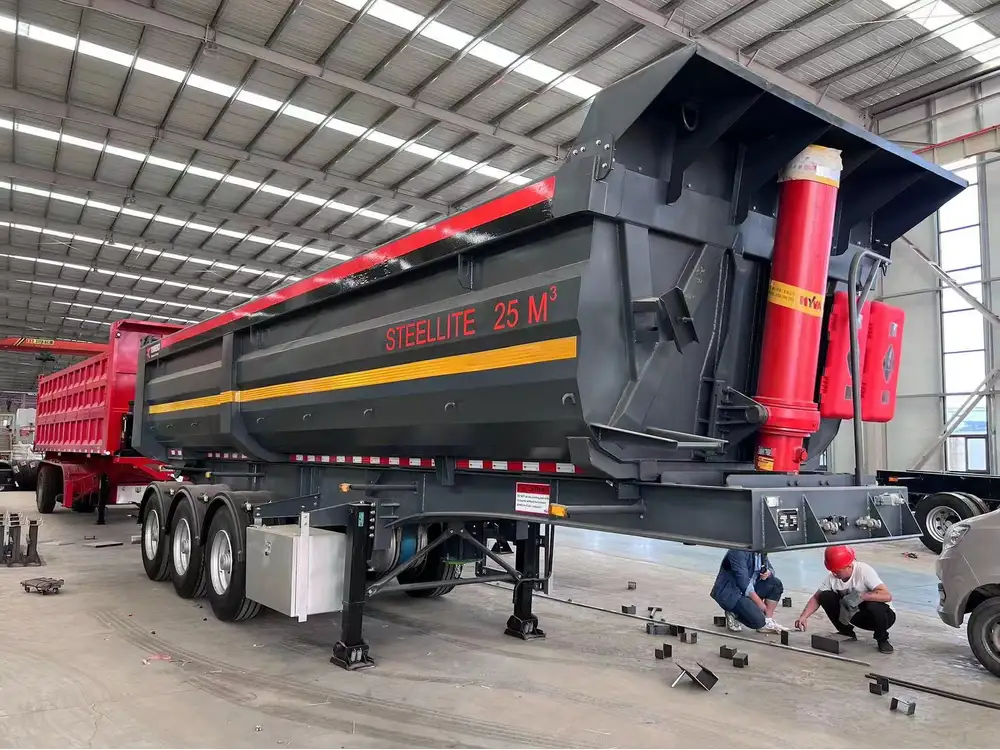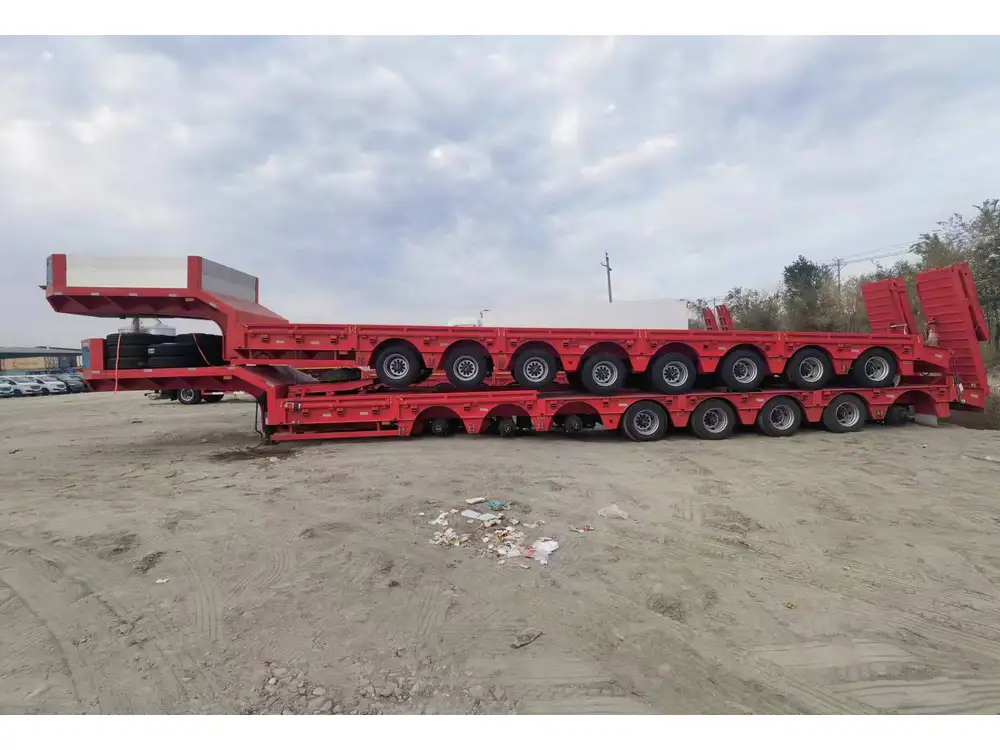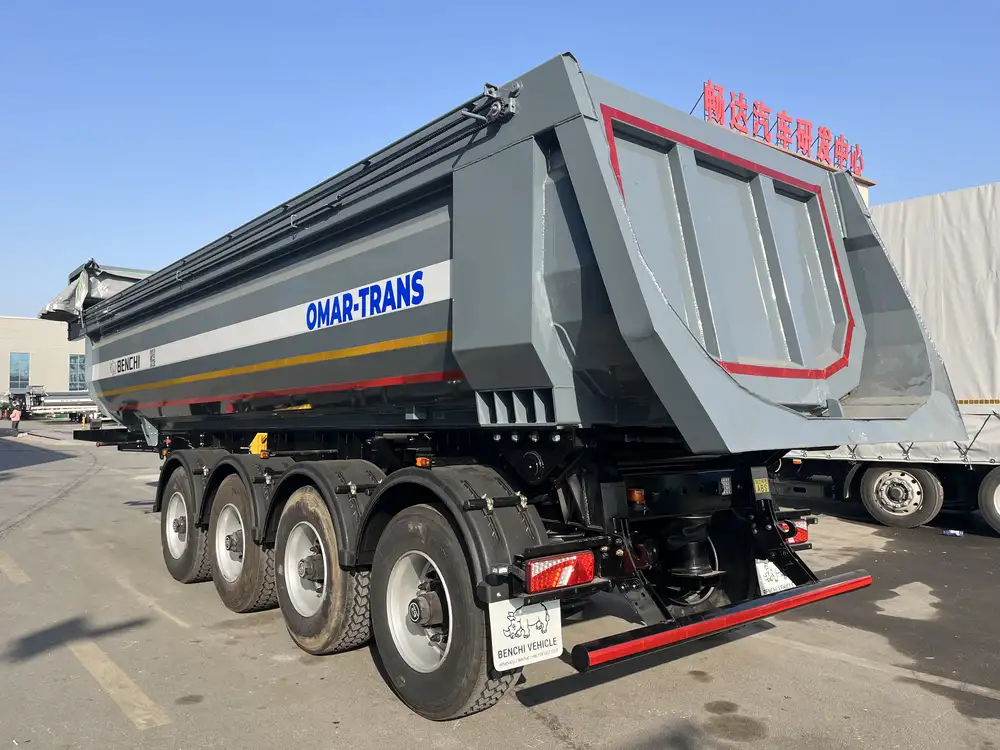When it comes to the operation and maintenance of dump trailers, one key piece of equipment often overlooked is the jack. Understanding the essential specifications and requirements for the right jack size not only ensures safety but also enhances operational efficiency. In this guide, we will delve into the intricate details of selecting the appropriate jack size for your dump trailer, addressing various aspects such as load capacity, type of jack, and maintenance protocols.
Understanding the Basics of Dump Trailers
Before we discuss the jack size, it’s crucial to grasp what a dump trailer entails. Dump trailers are versatile assets in industries ranging from construction to landscaping, designed to efficiently haul and unload materials. They operate on a simple hydraulic mechanism, which elevates the trailer bed to allow for the offloading of contents. An optimized jack is essential for stabilizing the trailer during loading and unloading processes, safeguarding both the equipment and the operator.
Key Features of Dump Trailers
| Feature | Description |
|---|---|
| Capacity | Ranges from 3,000 lbs to 20,000 lbs or more |
| Construction | Typically constructed of steel or aluminum |
| Hydraulic System | Uses hydraulic cylinders for lifting the trailer bed |
| Payload Type | Commonly used to transport gravel, dirt, debris, etc. |

Load Capacity: Analyzing Requirements
Determining the Weight Capacity
One of the most critical factors in selecting a jack is determining the load capacity of your dump trailer. Each trailer has a specified maximum load, usually outlined in the manufacturer’s manual or specifications sheet. It’s important to assess both the Gross Vehicle Weight Rating (GVWR) and the payload capacity. The GVWR incorporates the weight of the trailer plus its maximum load, while the payload capacity refers specifically to the weight of the materials transported.
Example: If your dump trailer has a GVWR of 10,000 lbs and a tare weight of 3,500 lbs, the payload capacity is:
[ \text{Payload Capacity} = \text{GVWR} – \text{Tare Weight} = 10,000 \text{ lbs} – 3,500 \text{ lbs} = 6,500 \text{ lbs} ]Size Recommendations Based on Load
| Load Capacity | Recommended Jack Size |
|---|---|
| 3,000 lbs | 2,000 lb capacity jack |
| 6,500 lbs | 3,500 lb capacity jack |
| 10,000 lbs | 5,000 lb capacity jack |
| 20,000 lbs | 12,000 lb capacity jack |

Types of Jacks for Dump Trailers
Understanding the types of jacks available is vital. Different jacks suit various operational needs, and their configurations can significantly affect performance.
1. A-Frame Jacks
These jacks are characterized by their triangular design, providing stable support for lighter dump trailers. They are manually operated by a hand crank, making them cost-effective but requiring more physical effort.
2. Electric Jacks
Perfect for larger and heavier dump trailers, electric jacks offer convenience and ease of use. They reduce physical strain and allow for quicker operations, ideal for high-volume tasks where efficiency is paramount.

3. Scissor Jacks
These provide extra stability and strength, capable of lifting substantial weight loads. Scissor jacks feature a compact design and deploy a mechanical advantage to lift trailers evenly.
4. Hydraulic Jacks
Often used in tandem with dump trailers’ hydraulic systems, these jacks can lift considerable loads effortlessly. They operate on a principle that harnesses hydraulic fluid’s power, offering fast and efficient lifting.
Factors to Consider When Selecting a Jack
Choosing the appropriate jack for your dump trailer involves various considerations that ensure both safety and functionality.

1. Weight Distribution
Improper weight distribution can lead to instability during operation. Consider how the payload shifts when the trailer is loaded and unloaded.
2. Terrain Evaluation
Evaluate the terrain where the dumping operations will take place. Irregular or soft ground may require jacks with broader bases or additional support to prevent sinking or rolling.
3. Frequency of Use
If the jack will be used frequently, investing in a durable, heavy-duty jack can save time and money in the long run due to reduced maintenance requirements.

4. Height Requirements
Ensure the jack can accommodate the height of your dump trailer when fully loaded. This consideration is crucial for safe operation and effective offloading.
5. Portability
For operators who frequently transport their trailer to different job locations, a lightweight and easily transportable jack can be a significant advantage, simplifying logistics.
Maintenance Protocols for Jacks
Just like dump trailers, jacks require regular maintenance to ensure longevity and performance. Proper care can prevent mishaps and mechanical failures. Here are some essential maintenance tips:

Frequent Inspection
Regularly inspect the jack for any signs of wear or damage. Pay attention to:
- Rust or corrosion
- Bendy or cracked components
- Fluid leakage (for hydraulic jacks)
Cleaning
Keep the jack clean to prevent dirt accumulation that can inhibit performance. Routine cleaning extends the life of the equipment and maintains optimal functionality.
Lubrication
Lubricate moving parts according to the manufacturer’s instructions. Lubrication reduces friction and wear, ensuring smooth operation.

Avoid Overloading
Always adhere to weight limits specified by the jack’s manufacturer. Overloading can cause mechanical failure and pose serious safety risks.
Troubleshooting Common Jack Issues
Problem: Jack Won’t Lift
- Possible Cause: Low hydraulic fluid levels.
- Solution: Check and refill hydraulic fluid as necessary.

Problem: Jack Lifts Unevenly
- Possible Cause: Uneven load distribution.
- Solution: Redistribute the load evenly across the trailer.
Problem: Jack is Stuck
- Possible Cause: Dirt or debris in the mechanism.
- Solution: Clean the jack thoroughly and lubricate moving parts.
Conclusion
Selecting the proper jack size for a dump trailer entails careful consideration of load capacities, types of jacks, and operational factors. Ensuring an appropriate match not only facilitates smoother operations but also promotes safety and efficiency on job sites. As industry standards evolve and technologies advance, remaining informed about the latest innovations in jack functionality can further optimize your trailer’s performance.
With diligent maintenance and proper selection aligned to your specific needs, the right jack becomes an invaluable tool in your arsenal, enhancing your operational capability and achieving remarkable results in the hauling industry.



